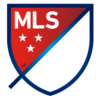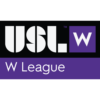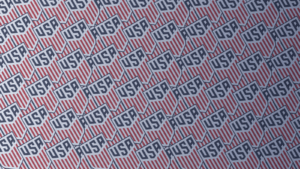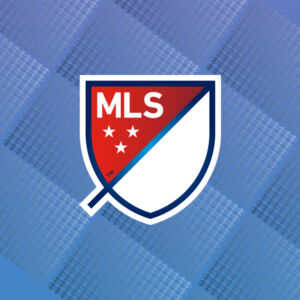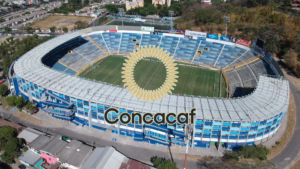Since the United States does not have one league system, it can sometimes get a little muddled what the United States soccer competition pyramid actually looks like. The professional leagues are split up into three divisions. The most elite development leagues are shown below, to see the full picture click on United States – Country Page.
USSF Division 1 - Professional Leagues
Leagues that are officially sanctioned by USSF as professional leagues. These leagues represent the highest level of competition in the growing United States soccer system.
Top-flight professional soccer league in the United States and Canada. Three teams qualify to play in the CONCACAF Champions League.
USSF Division 2
USSF Divison 3
Development Leagues
Iconic Players Light Up Major League Soccer
More teams have household names boosting their image than ever before. Pele was one of the first of the legends to make an impact on the league when he joined New York Cosmos in 1991. At the time he was thirty-four and not played soccer for eight-month prior.
Yet it was the introduction of David Beckham that sparked a real interest in the league. He joined MLS at the time when he was a global icon. Since then the league has seen an influx of soccer legends on several teams. For example Thierry Henry, Wayne Rooney, Zlatan Ibrahimović and Frank Lampard.
Major League Soccer Club Values Higher than Ever Before
Major League Soccer (MLS) continues to make strides towards improving its standards. The number of teams in the league has grown and so has its support. The twenty-six teams in the league now have a greater value than the ten original teams from 1996. Furthermore, they have larger arenas to accommodate bigger crowds of fans attending games. A comparison of Forbes articles shows how much their values have changed over time.
Cup Competitions
The oldest and most prestigious club cup competition in the United States. The winner of the cup qualifies for CONCACAF Champions League.
All professional teams automatically qualify for the cup and make up the bulk of the clubs that compete for this title.
Built on Tradition
The Lamar Hunt US Open Cup, also known as US Open Cup for short, is the United State’s oldest soccer competition. 100 of the best American soccer clubs compete for the cup, which has been running since 1913. This upcoming Lamar Hunt US Open Cup will be the 108th iteration of the competition.
The most elite cup in the United States Soccer Competition Pyramid is undoubtedly the Lamar Hunt US Open Cup.
Current Format
The teams that make up the cup competition are all the professional teams in the United States – those from MLS, USL Championship, USL League One, NISA, and development or amateur teams that qualified by winning their respective regional cups and qualification matches.
The cup is played throughout the year in a single-leg knockout format (also called single-elimination format) leading up to the final where the two remaining teams play a single match to determine the champion.
Qualification
There are two paths to qualify for the Lamar Hunt US Open Cup: the professional and amateur paths.
Professional Path
All professional teams automatically qualify for the cup and make up the bulk of the clubs that compete for this title.
Cup Awards and Prize Money
- The champion of the Lamar Hunt US Open Cup is awarded $300,000 and qualifies for the CONCACAF Champions League
- The runner-up is awarded $100,000
- To promote development, the highest-placed team from each lower division is awarded $25,000
Modern Game
Since the creation of Major League Soccer in 1996, only 1 non-MLS club has won the Lamar Hunt US Open Cup: Rochester Rhinos. Additionally, only 1 non-MLS club has made it to the Lamar Hunt US Open Cup finals since. However, as the beautiful game continues to grow in the United States, the lower division level is getting better and will predictably mount a title challenge in the future.
US Open Cup Winners by Year
| Year | Team |
|---|---|
| 1996 | DC United |
| 1997 | FC Dallas (Dallas Burn) |
| 1998 | Chicago Fire |
| 1999 | Rochester New York FC (Rochester Rhinos) |
| 2000 | Chicago Fire |
| 2001 | LA Galaxy |
| 2002 | Columbus Crew |
| 2003 | Chicago Fire |
| 2004 | Sporting Kansas City (Kansas City Wizards) |
| 2005 | LA Galaxy |
| 2006 | Chicago Fire |
| 2007 | New England Revolution |
| 2008 | DC United |
| 2009 | Seattle Sounders FC |
| 2010 | Seattle Sounders FC |
| 2011 | Seattle Sounders FC |
| 2012 | Sporting Kansas City |
| 2013 | D.C. United |
| 2014 | Seattle Sounders FC |
| 2015 | Sporting Kansas City |
| 2016 | FC Dallas |
| 2017 | Sporting Kansas City |
| 2018 | Houston Dynamo |
| 2019 | Atlanta United FC |
| 2020 | N/A, COVID-19 pandemic. |
| 2021 | N/A, COVID-19 pandemic. |
| 2022 | Orlando City SC |
Top 3 Major League Soccer Stadia by Capacity
USL Structure
The United Soccer League, together with NISA, makes up the entire professional lower leagues in the United States. On the men’s side of things, there are 3 different divisions in the USL: Championship, League One, and League Two.
The USL Championship represents the 2nd division in the United States soccer pyramid and is sanctioned by USSF.
Men's Competitions
The USL Championship is regarded as the 2nd tier in the United States soccer pyramid. There is no promotion and relegation with the MLS, as the two league systems are entirely separate.
USL League One and NISA are both widely regarded to be division 3 in the United States Competition Pyramid.
USL League Two, formerly known as PDL, is the premier development league in the United States. USL League Two is part of the 4th tier in American soccer because this league is not a professional league, and. divisions 1-3 are considered professional leagues under USSF.
Women's Competitions
The USL also features women’s competitions. The USL W League is considered to be third in the United States Women’s soccer pyramid as a "pre-professional" or developmental league.
USL W League is set to kick off in 2022.
Financial Criticisms
There are many critics of the USL’s financial structure as it does not promote wage growth or incentivizes competition through prize money.
Right now, winning the USL Championship does not give any prize money to the players that won it.
Additionally, the organization recently declined a petition to raise the minimum salary of players to $20,000/season.

